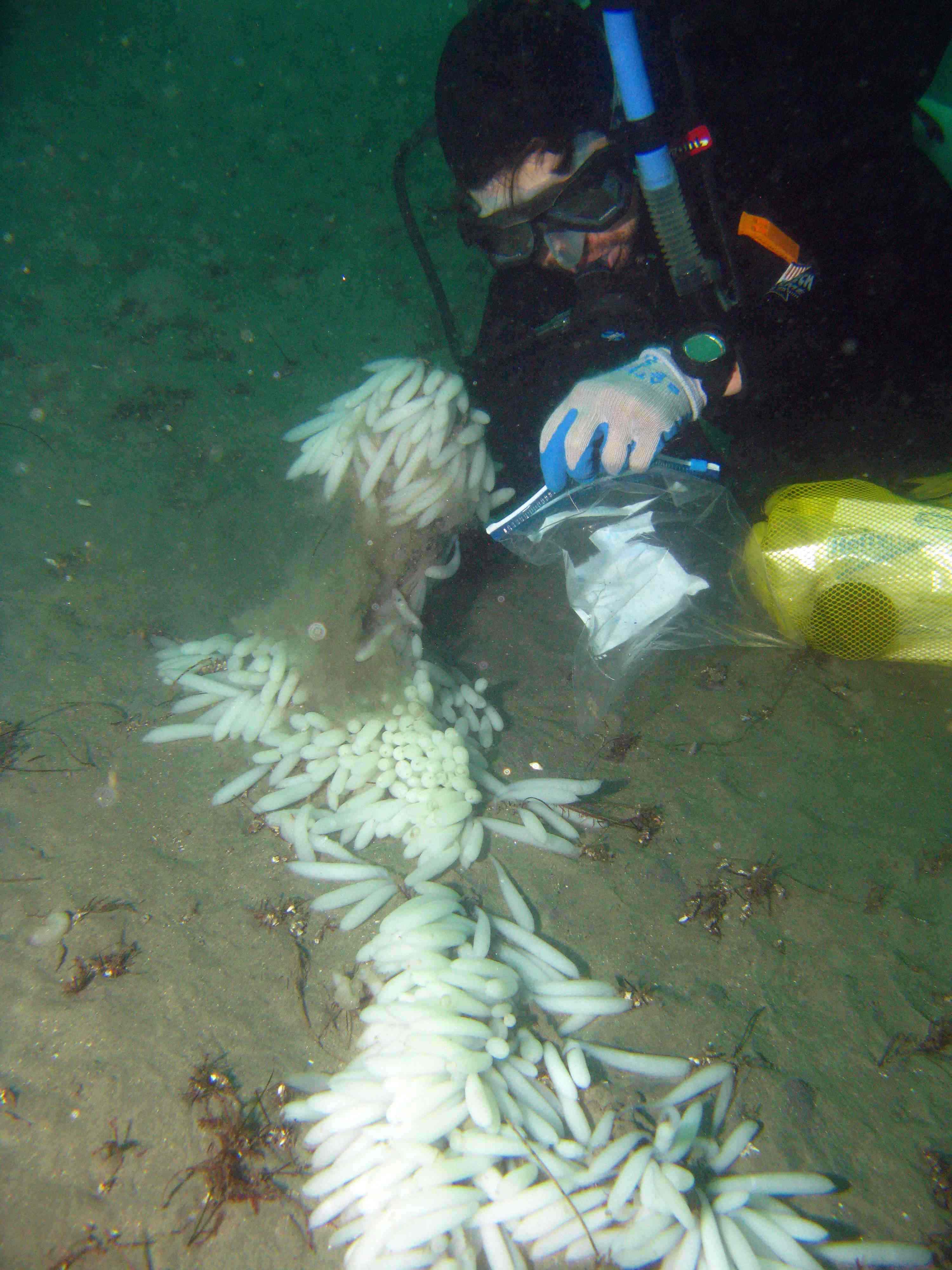Mike Navarro |
||
 |
(Graduate Student) | |
| Email: | monavarr @ ucsd.edu | |
| Phone: | (858) 534-3579 | |
| Fax: | (858) 822-0562 | |
| Address: | 9500 Gilman Drive La Jolla, California 92093-0218 |
|
| Click here to download CV. | ||
| Research Interests:
In general, my major interests are in the study of California Current Ecosystem (CCE) and marine conservation concerns of the Southern California Bight. As a second year student at SIO, I am developing my dissertation topics on several questions centered on the early life stages of market squid, Doryteuthis (formerly Loligo) opalescens. Market squid are an important link in the ecology of the CCE because they can transfer energy from deeper waters of the continental slope to more shallow waters of the shelf. These squid are locally referred to as the “candy of the sea” because they have been scientifically documented to be the prey of more than 40 species of organisms including commercially and recreationally caught fish and invertebrates as well as federally protected birds and marine mammals. In addition, market squid are an economically important part of the California fisheries. Market squid are usually the top earning fishery averaging $23.2 million in ex-vessel value per year since 1995. Possible scientific questions that I am exploring include:
After completing my dissertation at SIO, I am interested in continuing to gain career experience in oceanography, fisheries management, population dynamics, environmental economics and politics, and communicating science to the public. I am looking forward to working on future research projects that unify efforts among regulatory, academic, and private interests. Please contact me via email, monavarr @ ucsd, or at (858) 534- 3579, if you would like more information about my research. |
||